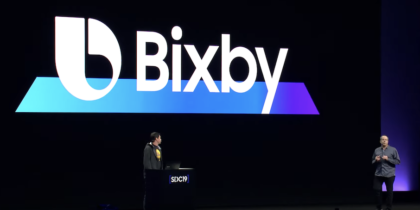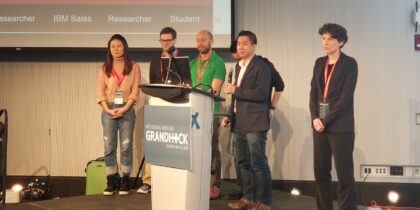In a dynamic panel discussion at this week’s Samsung Developer Conference, experts from IBM and The Weather Company discussed how enterprises can leverage augmented intelligence (AI) and Internet of Things (IoT) devices to tackle some of the world’s most thorny challenges. Climate, environmental and health-related obstacles present opportunities to utilize emerging technology trends to create sustainable, intelligent solutions that can help companies and their customers get better at making informed decisions.
Sridhar Sudarsan, CTO of Watson partnerships at IBM, kicked off the dialogue by identifying four key criteria that enterprises can use to determine what defines AI:
- The ability for the app or solution to understand information.
- Figuring out how to rationalize that data.
- Knowing the right action to take.
- Engaging in continuous learning from changes in information.
The group explored the potential for how businesses could use IoT technology and AI to help improve people’s lives in areas like air and water quality.
“It will get into how you are integrating those kinds of data points with other pieces of information, like user behavior, how much time a person is spending outdoors, and indoors, and connecting those things in a micro and a macro way,” said Sudarsan. He emphasized the importance of understanding consumer behavioral patterns and collecting sensory data as critical to effectively delivering those insights to help customers make better decisions.
Use AI to Work Without Barriers
Learn how AI-powered devices enable the future of work. Download Now
Kourosh Karimkhany, head of weather underground at The Weather Company, predicted the birth of a new industry — the “instant gratification economy” — where customers will expect to receive items ordered online not just the next day, but the next hour. “Amazon is actually looking at this very closely, and one of the things that’s holding them back is the lack of real-time wind data,” he said.
How Can Enterprises Harness AI?
Challenges for enterprises, Sudarsan pointed out, include figuring out how to use AI sensors to collect metrics that allow failure prediction. “A goal is to predict the fact that there is some potential here that we need to be wary of and need to do something about way before it happens,” he said.
When asked about how to select and prepare the right data for these types of problems, Sudarsan pointed to the importance of “small data” — high quality, well-labeled data. “There are ways to start with small data, and that’s where technologies like Watson come in — we’re building it for the enterprise, optimizing it from that perspective, allowing you to scale that data into making it usable.”
Chantal Botana, global head of cognitive products and emerging platforms at The Weather Company, raised the issue of “cognitive tolerance” in relation to AI and IoT, which she defined as “being able to interpret, through conversations, to understand context of time, location, weather, etc. to know if that person is in a stressful environment.”
Botana explained that if, for example, an organization can understand that somebody might be in the path of a hurricane before that person even asks a question, then the enterprise can respond more appropriately to their needs.
Sudarsan concluded by pointing out a “moral responsibility” to create AI in the right form. “No one knows where this will go, but I honestly believe the way we are crafting and creating technology, there are boundaries we can create,” he said. “Not just as me as an archetype or as an executive, not me as IBM … not me as one company, but really as just a human being, next generation, building these technologies in a way that harnesses the power.”
Trends that are contributing to the rise of the digital workforce include augmented reality and the Internet of Things.







